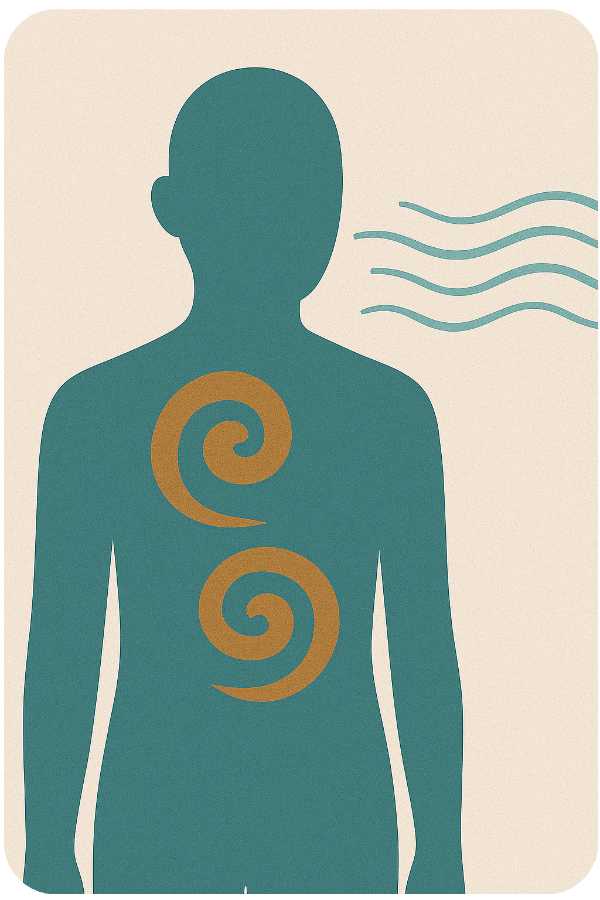The Lingering Pathogen:
How Unresolved Illness Can Drain Your Energy
 For many people, chronic fatigue begins with a cold, flu, or other viral infection. You expect to recover—but weeks or even months later, the exhaustion remains. You may feel foggy, easily chilled, or experience strange symptoms that come and go. In Traditional Chinese Medicine (TCM), this experience is not surprising. It reflects a concept known as the “lingering pathogen”—a hidden disruption that remains in the body long after the acute illness has passed.
For many people, chronic fatigue begins with a cold, flu, or other viral infection. You expect to recover—but weeks or even months later, the exhaustion remains. You may feel foggy, easily chilled, or experience strange symptoms that come and go. In Traditional Chinese Medicine (TCM), this experience is not surprising. It reflects a concept known as the “lingering pathogen”—a hidden disruption that remains in the body long after the acute illness has passed.
In TCM, the body is constantly in dialogue with its environment. Wind, cold, dampness, and heat are seen not only as weather patterns but also as metaphors for external influences that can enter the body and cause illness. Normally, when we catch a cold or viral infection, the body mounts a defense—sweating, coughing, or fever are signs that it’s trying to expel the pathogen. But if our defenses are weak, or the illness is unusually strong, not all of it may be cleared.
When this happens, a portion of the pathogen may become "hidden" or "lingering"—often referred to as liú yīn in TCM. It no longer causes overt symptoms like fever or sore throat, but it disrupts the body’s internal balance in subtle ways. It may lodge in the muscles, joints, or deeper systems, blocking the smooth flow of qi and depleting energy over time. This lingering state can lead to chronic tiredness, mental fog, low immunity, or a sense of heaviness and constraint.
Importantly, TCM teaches that before you rebuild what is lost, you must first remove what doesn’t belong. This is why tonifying herbs or energy practices may not help—or may even worsen symptoms—if the lingering pathogen is still present. It’s like trying to renovate a house before removing the mold. Treatment must be sequential: first clearing, then nourishing.
Gentle herbal formulas designed to expel residual pathogens while supporting healthy qi might be used early in treatment. These often include aromatic herbs that “transform dampness” or circulate the exterior, such as hou po (magnolia bark), pei lan (eupatorium), or huo xiang (patchouli). In some cases, formulas like Xiao Chai Hu Tang are used to address what TCM calls a “half-interior, half-exterior” condition—typical of a pathogen that is stuck and unresolved.
Rest, warmth, light exercise, and mild sweating through safe movement can also support the body's clearing process. The goal is not to aggressively purge the system, but to gently assist it in regaining balance. Once the lingering influence is addressed, the body is better able to respond to nourishing herbs, foods, and practices aimed at long-term recovery.
If your fatigue began after illness and hasn’t resolved, it may not be a matter of weakness alone—it may be that something is still lingering. With time and the right approach, TCM offers a gentle but profound way to help the body complete its unfinished work and move forward with renewed strength.
Vocabulary Guide
- qi (气): Vital energy that supports movement, metabolism, and defense.
- liú yīn (留阴): A “lingering pathogen”—a hidden or unresolved influence that disrupts internal harmony after illness.
- hou po (厚朴): Magnolia bark; used to move qi and resolve dampness.
- pei lan (佩兰): Eupatorium; clears dampness and harmonizes the middle burner.
- huo xiang (藿香): Patchouli; aromatic herb that transforms damp and supports digestion.
- Xiao Chai Hu Tang (小柴胡汤): A classic formula for “half-exterior, half-interior” conditions; often used in unresolved or recurring illnesses.




